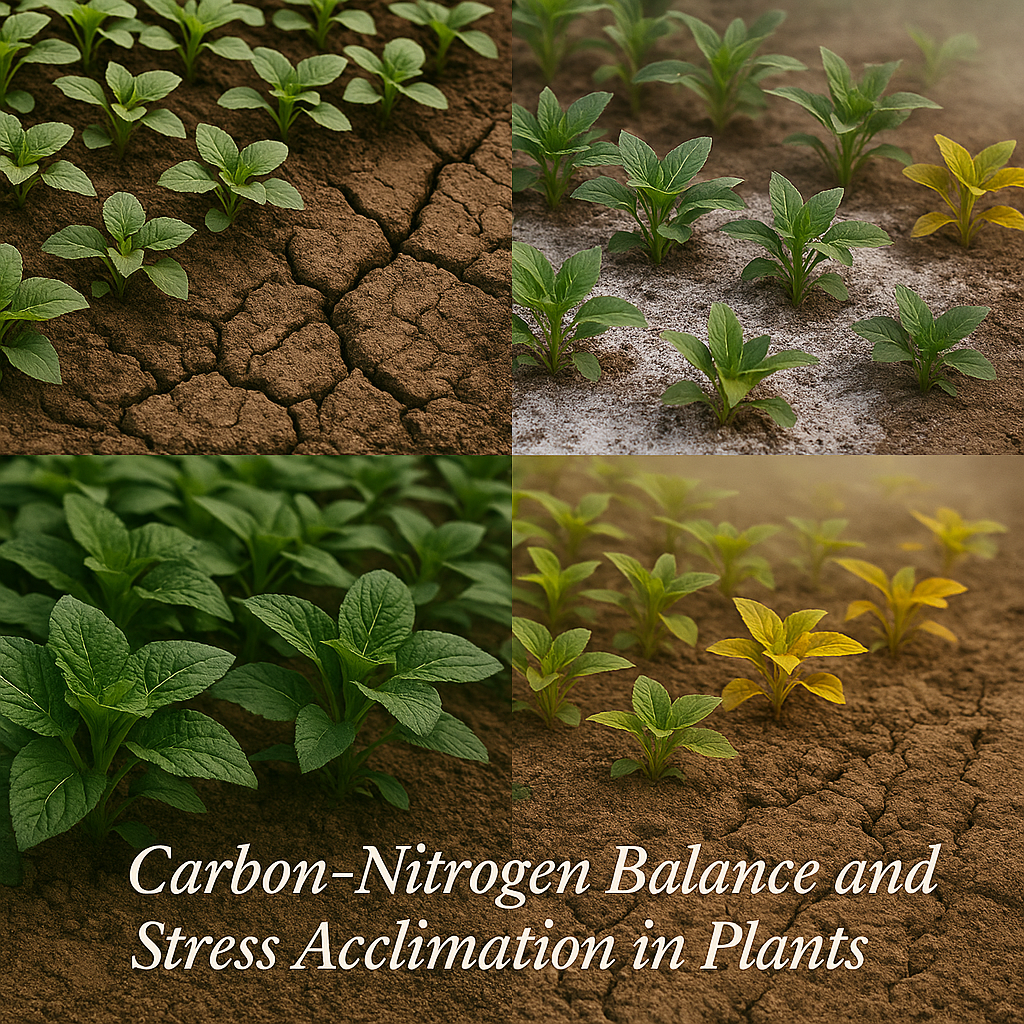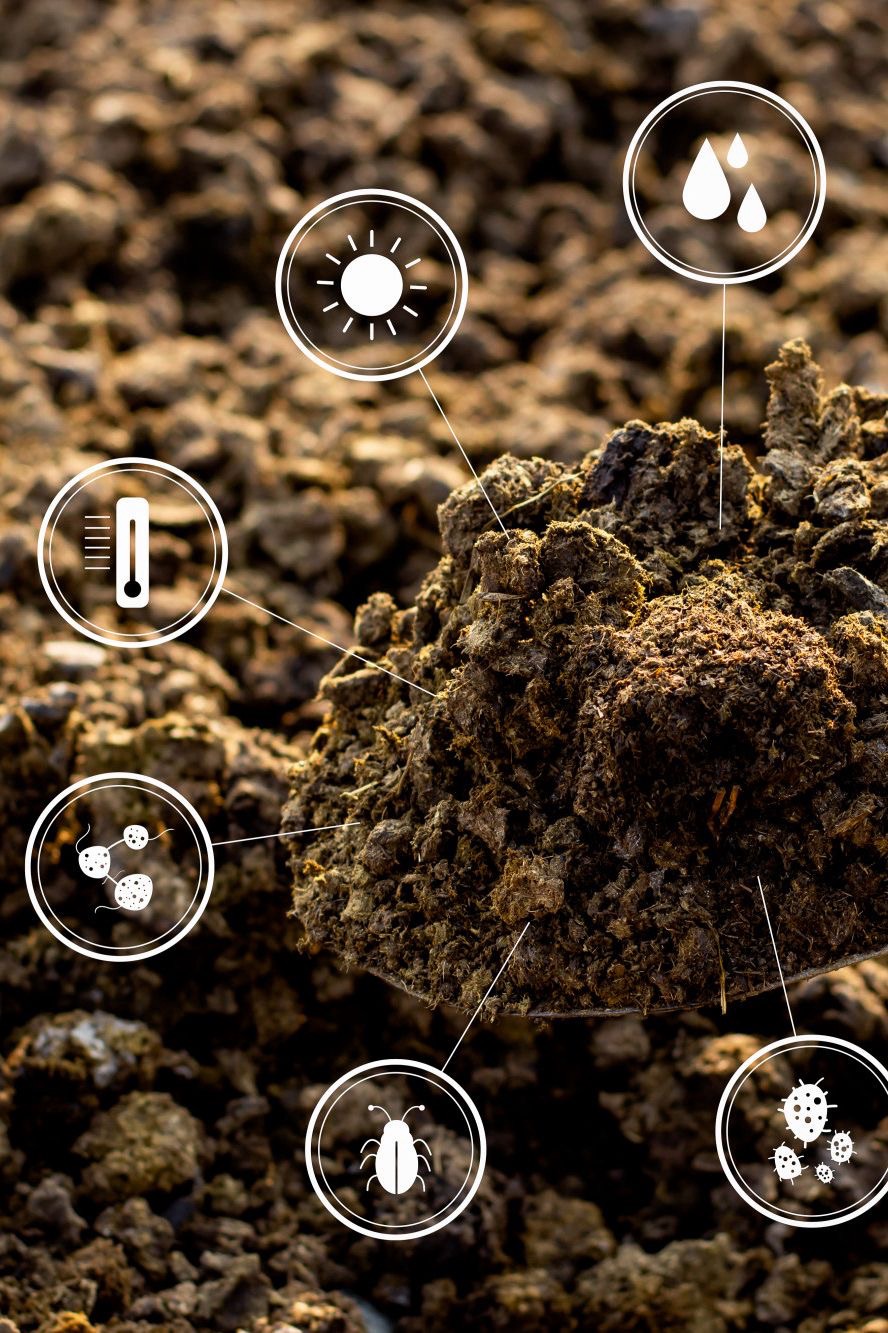In the age of climate uncertainty, plants are frequently exposed to environmental extremes—ranging from drought and salinity to nutrient scarcity and heat waves. These stressors challenge the very foundation of plant growth and survival. At the center of this response lies the delicate balance between carbon (C) and nitrogen (N), two essential elements that form the biochemical backbone of plant metabolism. Far from being simple nutrients, carbon and nitrogen are signaling entities that help dictate how plants grow, survive, and adapt.
The carbon-nitrogen (C:N) balance is a critical indicator of plant health and function. It influences not only growth patterns and resource allocation but also the plant’s ability to acclimate to stress. When environmental conditions shift, plants must dynamically adjust their C:N balance to maintain physiological homeostasis and metabolic efficiency. This article explores the role of C:N balance in plant physiology, the way it shifts under abiotic stress, and how it can be harnessed to improve crop performance in a changing climate.
The Foundations of Carbon and Nitrogen Metabolism
Carbon enters the plant system primarily through photosynthesis. In the chloroplasts, carbon dioxide is fixed into carbohydrates via the Calvin cycle, resulting in the production of sugars like glucose and sucrose, and storage compounds such as starch. These carbon molecules are the building blocks of plant biomass and act as precursors for a variety of secondary metabolites.
Nitrogen, on the other hand, is acquired from the soil, predominantly in the form of nitrate (NO₃⁻) or ammonium (NH₄⁺). Inside the plant, nitrate is reduced to nitrite and then to ammonium, which is subsequently incorporated into amino acids like glutamine and glutamate. These amino acids serve as precursors for protein synthesis, nucleic acids, and other nitrogen-containing compounds essential for growth and stress responses.
The C:N ratio at any point reflects the plant’s metabolic priorities. A balance between carbon assimilation and nitrogen uptake allows for coordinated growth. Any imbalance can result in growth inhibition, senescence, or stress sensitivity.
How C:N Balance Modulates Growth and Development
Under optimal conditions, a stable C:N ratio supports healthy plant growth. Excessive carbon relative to nitrogen results in sugar accumulation, which can signal the plant to slow down photosynthesis and enter early senescence. Conversely, high nitrogen without sufficient carbon leads to an overaccumulation of amino acids, delaying flowering and promoting vegetative growth. Plants have evolved mechanisms to constantly monitor and adjust this ratio depending on internal developmental cues and external environmental conditions.
Photosynthetically derived sugars not only serve as energy sources but also function as signaling molecules that communicate carbon status to various parts of the plant. Nitrogen, too, has its own signaling role, modulating enzyme activity, gene expression, and resource partitioning. The interplay between these signaling networks forms a sophisticated feedback loop that keeps the C:N balance tightly regulated.
Environmental Stress and Disruption of the C:N Balance
Abiotic stresses are notorious for perturbing this delicate balance. Drought, for instance, causes stomatal closure, limiting carbon dioxide uptake and thereby reducing photosynthesis. While carbon fixation is curtailed, nitrogen uptake may continue, especially under mild water stress. This leads to an accumulation of nitrogenous compounds such as proline and glutamine, which can act as osmoprotectants but may also indicate metabolic imbalance.
Salinity stress adds another layer of complexity. High salt concentrations in the soil interfere with water uptake and ion homeostasis, reducing the efficiency of nitrate transport and assimilation. At the same time, the plant may accumulate sugars and polyols to balance osmotic stress, shifting the C:N ratio toward carbon dominance. Temperature extremes—both heat and cold—alter enzyme kinetics, often reducing the activity of key enzymes involved in both carbon and nitrogen metabolism. For example, nitrate reductase and glutamine synthetase are heat-sensitive and lose functionality under thermal stress, leading to inefficient nitrogen assimilation.
Nutrient limitations, particularly nitrogen deficiency, naturally shift the C:N ratio toward a carbon-rich state. In such conditions, plants accumulate sugars and secondary metabolites such as anthocyanins and flavonoids. These molecules serve as both antioxidants and stress indicators. Additionally, nitrogen-starved plants often exhibit reduced chlorophyll content and protein synthesis, emphasizing the importance of C:N balance in regulating photosynthetic efficiency and overall metabolic health.
Molecular Regulation and Sensing of C:N Ratio
The C:N balance is not a passive result of metabolic activity; it is actively sensed and regulated at the molecular level. Several key signaling pathways integrate carbon and nitrogen status with plant developmental programs. One of the central regulators is the SnRK1 (Sucrose non-fermenting-1-related kinase 1) complex, which is activated under low carbon availability. SnRK1 acts as a metabolic master switch, downregulating energy-intensive processes like protein synthesis while promoting catabolic pathways and stress responses.
In contrast, the TOR (Target of Rapamycin) pathway is activated when both carbon and nitrogen are abundant. TOR promotes cell proliferation and growth, acting as a counterbalance to SnRK1. The interplay between SnRK1 and TOR helps the plant switch between growth and stress defense modes depending on resource availability.
Nitrogen-specific sensors, such as the NIN-like proteins (NLPs), regulate the transcription of nitrogen-responsive genes, while sugars such as sucrose and trehalose-6-phosphate (T6P) modulate carbohydrate signaling. These sugar signals also influence hormonal pathways, including those involving abscisic acid (ABA), cytokinins, and auxin, integrating nutrient status with developmental decisions.
Hormonal Crosstalk and C:N Ratio
Plant hormones are deeply intertwined with C:N signaling networks. ABA, often referred to as the stress hormone, is upregulated during drought and nitrogen deficiency. It promotes nitrogen remobilization by triggering protein degradation and redirecting nitrogen from older to younger tissues. Cytokinins, on the other hand, are known to promote nitrogen uptake and transport but are downregulated during nitrogen starvation to suppress shoot growth.
Auxins regulate root growth and architecture in response to both carbon and nitrogen availability. Low nitrogen levels often induce deeper root growth through changes in auxin transport, thereby enhancing the plant’s ability to forage for nutrients. Ethylene and jasmonic acid are commonly associated with stress responses and can promote senescence and resource reallocation, especially when the C:N ratio shifts unfavorably.
This hormonal crosstalk ensures that the plant can dynamically adjust growth, resource allocation, and stress tolerance in response to changing internal and external signals.
Applications in Agriculture and Crop Improvement
Understanding and manipulating the C:N balance has profound implications for sustainable agriculture. Efficient use of nitrogen fertilizers is a major challenge in crop production. Crops with better nitrogen-use efficiency (NUE) not only yield more under low-nitrogen inputs but also reduce environmental pollution caused by nitrate leaching.
By selecting or engineering genotypes with a more favorable C:N adjustment mechanism under stress, breeders can develop climate-resilient crops. For example, drought-tolerant rice varieties often maintain higher photosynthetic rates and better nitrogen assimilation under water-limited conditions. Similarly, in wheat, enhanced flag leaf photosynthesis contributes to better grain filling even under terminal heat stress, showcasing effective C:N coordination.
Biotechnological interventions such as overexpression of genes involved in nitrogen assimilation (e.g., GS1, GS2) or manipulation of sugar transporters and SnRK1 signaling components are being explored. Genome editing tools like CRISPR/Cas9 offer precise ways to tweak these metabolic regulators to fine-tune C:N balance in crops.
Moreover, the integration of high-throughput phenotyping, transcriptomics, and metabolomics has enabled scientists to track how plants respond to combined stresses and how C:N balance is affected. These omics tools help identify new candidate genes and pathways for improving resource efficiency and stress tolerance.
Future Prospects and Research Directions
As research on C:N dynamics expands, several promising directions emerge. Synthetic biology offers the potential to build artificial regulatory circuits that respond to C:N ratios, allowing for programmable responses to stress. AI-driven data integration from phenotyping platforms could help model C:N balance in real-time, enabling precision agriculture techniques.
The role of the rhizosphere microbiome in influencing plant nitrogen uptake and carbon metabolism is also gaining attention. Certain rhizobacteria can enhance nitrogen fixation and improve carbon partitioning, indirectly stabilizing the C:N ratio under stress. Understanding and leveraging these interactions could open up new frontiers in crop management.
Moreover, future studies must focus on the combined effects of multiple stressors, such as drought and heat, which often co-occur in the field. These combined stresses have unique effects on carbon and nitrogen pathways that cannot be predicted from studying each stress in isolation. Comprehensive models that incorporate multi-stress dynamics, developmental stage, and tissue specificity are essential to improve our understanding of how plants manage their C:N economy.
Conclusion
The carbon-nitrogen balance stands at the crossroads of plant metabolism, development, and environmental response. It is a powerful indicator of plant status and an active regulator of adaptive processes. By maintaining an optimal C:N balance, plants can allocate resources effectively, manage stress responses, and ensure survival and reproduction under fluctuating environments.
As the pressure to produce more food with fewer inputs intensifies, understanding the intricacies of the C:N balance becomes even more crucial. It offers a gateway to breeding smarter crops, applying fertilizers more judiciously, and ultimately building a more resilient agricultural system. The more we understand this metabolic conversation between carbon and nitrogen, the better we can tune it for the benefit of both plants and people.










